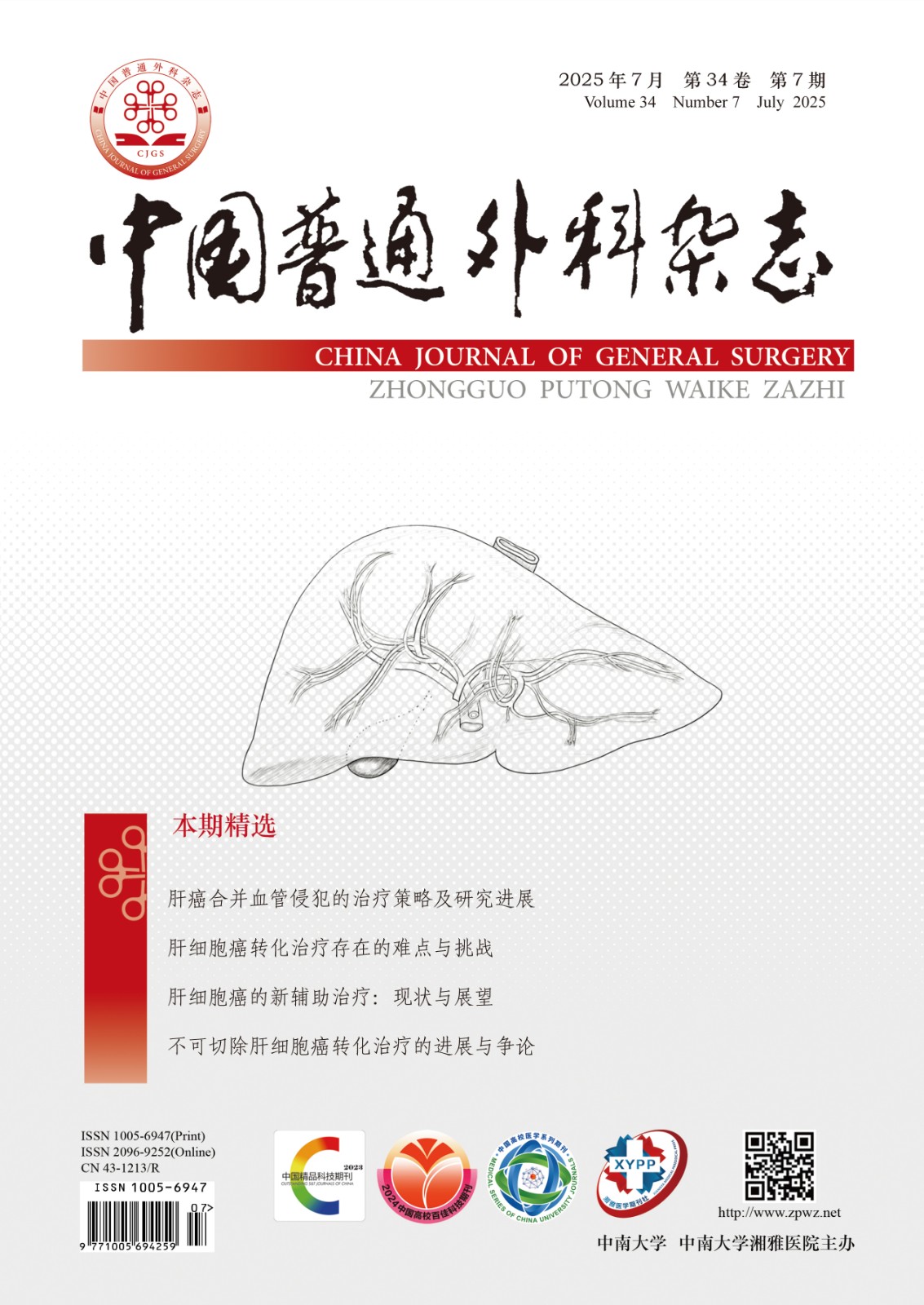WANG Chengyu
,
,
ZHANG Zhipeng
,
,
FANG Zhenhao
,
,
LI Xianchu
,
LI Xi
,
,
YIN Junda
,
,
DNEG Shengjun
,
,
YANG Hao
,
,
LONG Xueying
,
WU Wei
,
2020, 29(7):857-866.
DOI: 10.7659/j.issn.1005-6947.2020.07.010
Abstract:Background and Aims: There are many anatomical variations of the arteries supplying the liver. Currently, the anatomical classification methods of the liver arteries are mainly Michels’ classification and Hiatt’s classification. However, new types of anatomical variations have continually been discovered. So, previous classification systems cannot meet the clinical needs. This study was conducted to analyze the anatomical variations of the liver supplying arteries by imaging observation, so as to create an accurate classification method and provide precise scientific information for clinical work.
Methods: The imaging data of patients undergoing biphasic contrast-enhanced scanning of abdominal multi-slice spiral CT from January 2019 to March 2019 were reviewed. The patterns of the arteries supplying the liver were observed, the relevant data were recorded and categorical analysis was performed.
Results: The CT imaging data of 1 520 patients were selected, including 967 males and 553 females. Of the patients, 1 504 cases (98.95%) met Michels’ classification, and 16 cases (10.53‰) did not meet Michels’ classification; 1 507 cases (99.14%) met Hiatt’s classification, and 13 cases (8.55‰) did not meet Hiatt’s classification. By analyzing the anatomical variations of the arteries supplying the liver from the aspects of the origin of the common hepatic artery (CHA), the origin of the accessory left hepatic artery (ALHA) and the types of the arteries supplying the liver, the authors proposed the seven-type classification (according to the origin of the CHA) and five-type classification (according to the anatomical variation of the left and right liver supplying arteries and the combination of different variations) for classifying the anatomical types of the arteries supplying the liver. In the seven-type classification, 1 471 cases (96.78%) were classified as type I, 25 cases (1.64%) were type II, 7 cases (0.46%) were type III, 5 cases (0.33%) were type IV, 4 cases (0.26%) were type V, 4 cases (0.26%) were type VI, and 4 cases (0.26%) were type VII. In the five-type classification, 1 381 cases (90.86%) were classified as type I, 87 cases (5.72%) were type II, 38 cases (2.50%) were type III, 10 cases (0.66%) were type IV, and 4 cases (0.26%) were type V.
Conclusion: The new classification methods proposed in this study cover all possible anatomical variations, which simplify the complex situation of taking simultaneously into account the CHA and the hepatic supplying arteries for classification in previous studies. The frameworks of the classifications are clear, consistent with the anatomical reality and clinical cognition, and they can provide theoretical basis and guidance for clinical work.

